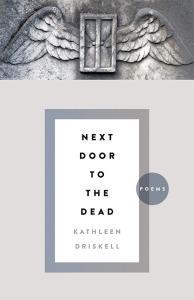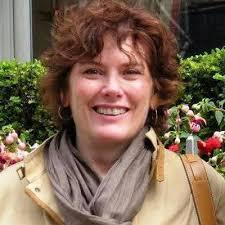(This is a guest posting, written by my wife, Therese L. Broderick, and appearing on her own poetry blog.)
Located on the same grounds where my father is buried, a nearby cemetery’s headquarters is the site for a variety of public discussions and activities. Once, I sat in attendance while a visiting lecturer explicated “One Art,” Elizabeth Bishop’s powerful poem of loss.

All these currents and more run through the eloquent, graceful, vivifying new book of fifty-one poems by Kathleen Driskell entitled Next Door to the Dead (The University Press of Kentucky, 2015). Over the next few days, this blog will focus on that highly admirable book. Today’s spotlight focuses on my own observations.
Conceptually, this impressive collection guides us first to a cemetery boundary, then through the gate, and then inside the graves in order to summon forth their spirits. Along this path, Next Door to the Dead unveils a cultural desecration, descending to that particular hell of funereal skullduggery. Thankfully, this talented poet knows how to guide us back to a proper reverence.
Humanistic as these poems are in orientation, they also honor the spiritual imagination, escorting the reader through multifarious encounters with disembodied personalities, some of them eternally in limbo. (The human lives envoiced in this book recall, for me, the personal dramas within The Spoon River Anthology by Edgar Lee Masters.) These pages peopled with ‘’Border State” individuals—Kentuckian and/or everywhere existential—explore matter-of-fact loss, grievously tragic loss; witty epitaphs, profound laments; family tales, town gossip; occasional ceremonies, timeless myths; skeleton-closet celebrities, anonymous worthies; gods and clergy, saints and sinners; and the (perhaps fallacious) empathetic mourning of critters and Nature.

Kathleen Driskell
Those character portraits are made expansive and vivid by Kathleen Driskell’s talents for weaving the textures of lyrical narration, persona, and monolog. Also by her utterly trustworthy shaping, her dynamic phrasing, her melody of vowels plus peal of consonants, the palpable tug of her versified lines, her strikingly true turns-of-phrase, and her images both rooted and revelatory.
Much can be said about “Tchaenhotep,” the book’s extended signature piece. A probing and subversive journey, this poignant monolog arrives in the voice of a female mommy exhumed, displaced from an ancient Egyptian tomb to a modern American museum. The unlikely speaker lived as a marginalized woman, a proletariat. Her ancient chant-like accounting of her own commonplace virtues and vices is a time-tested paradigm for judging innocence and guilt.
This prominent poem, then, weighs the merits of all other poems, of memorial poetry in all forms. And also of how respectfully our surviving cultures redeem the crimes committed by our forebears. Just as importantly, of how fruitfully you and I the readers have spent our own days and decades.
Thankfully, the highly deserving poet Kathleen Driskell is an artist, not an evangelist for any single faith tradition. In Next Door to the Dead, she devotes her artistry to sanctifying the natural dignity of her subjects, renewing for us all a vision of communal care and understanding. Blessed be every single one of her neighbors, in-the-flesh or otherwise.
.
